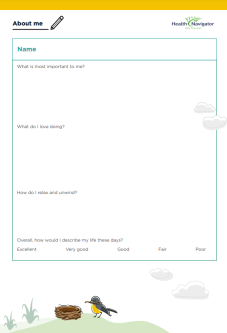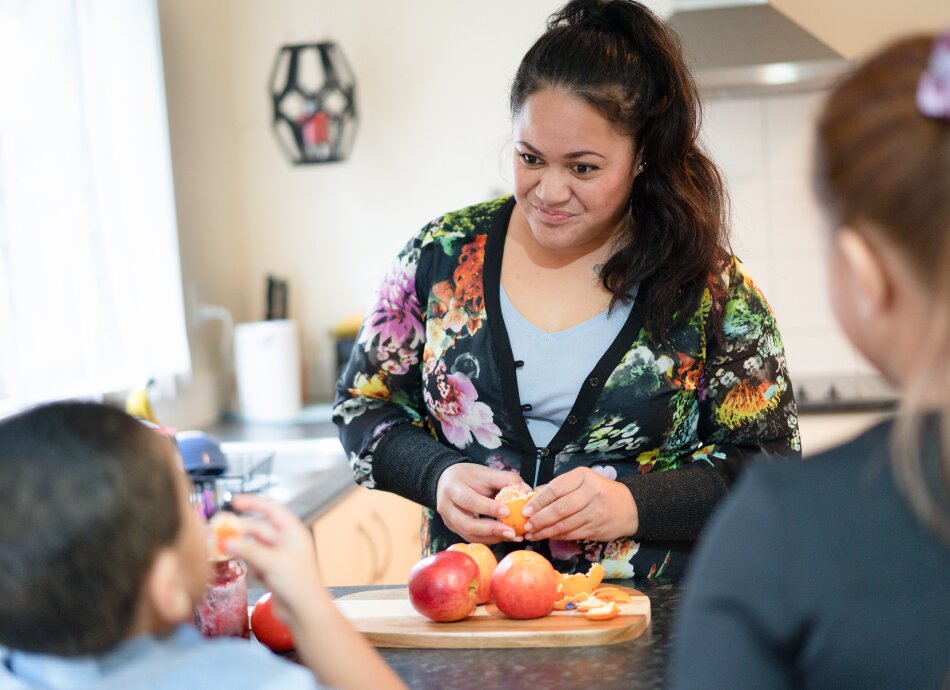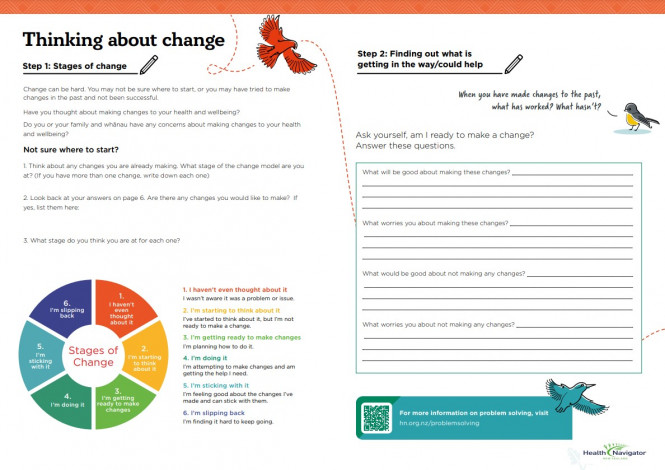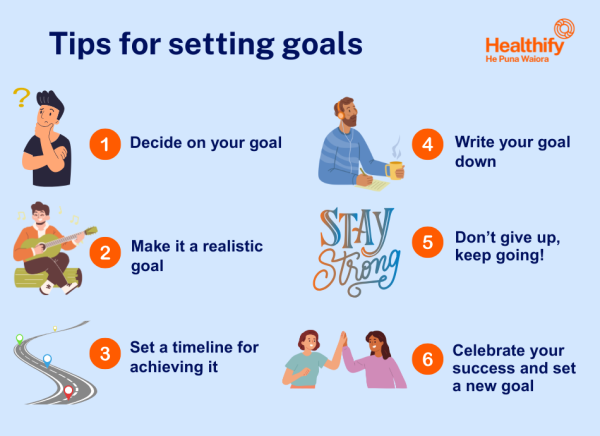Before you think about making changes you need to ask yourself why you're thinking about making a change at all. Is it because you have a goal you want to work towards? Read more about the importance of setting personal goals.
Goal setting is one of the best ways to help you make changes. It's a good skill to learn and can be used in many areas of your life, not just when thinking about your health and wellbeing.
In the 1980s a businessman George Doran came up with an acronym (SMART) to help set meaningful objectives. It can be used in many different contexts, whether you're trying to make your business more successful, do well in your studies or improve your health and wellbeing. The letters in SMART (with some health-related examples) stand for:
- Specific: Eating healthier sounds like a good idea. But what does it really mean? Aim for specific goals instead, such as not having any fizzy drink for the week or reducing your fizzy drink intake by a specific quantity. Or filling ½ your plate with vegetables, ¼ plate carbohydrates and ¼ protein for lunch and/or dinner, and swapping out sugar for sugar-free options in your coffee/tea or breakfast cereal.
- Measurable: Make your goal one you can measure. Walking for 20 minutes 3 days a week is a goal you can track; a goal of ‘walking more’ is less easy to keep track of. Read more about the benefits of walking.(external link)
- Attainable: Avoid aiming too high or too low. A good way to check your likeliness of achieving your goal can be by asking yourself ‘On a scale of 1 to 10, how confident do you feel to accomplish your actions?' (1 being not at all confident and 10 very confident). Remember a score of 7 and above is what you're aiming for. If your score is below 7 then think about what needs to be changed in amount, frequency or your action.
- Realistic: Losing a couple of kilos a week sounds great but this goal is unlikely to be achievable and may leave you feeling discouraged and more likely to give up on your efforts. Choosing realistic goals(external link) that you can meet will reinforce your efforts and keep you moving forward. For example, losing half a kilo a week is more realistic.
- Trackable/Time-bound: Choosing specific, measurable goals means you can track your progress over time. Write your efforts down in a journal or track them on an app so you can see how far you’ve come. Time-bound means that you set a goal that's achievable within a set time frame, eg, within 3 months or within a year.
Sometimes people set too many goals, which can result in not achieving any of them. Achieving the first one, however small, will build your confidence then you can set another one. Remember to be kind to yourself as new habits take time to become a part of your everyday routine – it can take from few weeks to a few months.
Te Kete Haerenga is a wellness toolkit and it has more information on setting goals. It also provides examples of goals and how to make SMART ones in specific areas such as sleep, stress, fatigue and pain.
There are also many goal setting and action planning apps and online tools for you to choose from.









